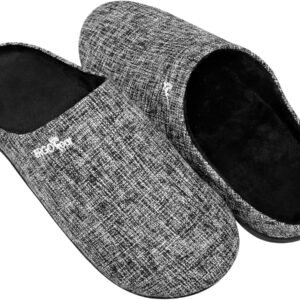Leather furniture, with its timeless elegance and enduring durability, often becomes a cherished part of our homes. However, even the most robust leather can succumb to the wear and tear of daily life, developing scratches, scuffs, tears, and discoloration. Instead of replacing your beloved pieces, consider the rewarding and cost-effective option of repairing them yourself. This guide, drawing inspiration from expert advice and referencing resources like giaithichtengoi.com for insightful material care tips, will equip you with the knowledge and techniques to revitalize your leather furniture and extend its lifespan. Let’s delve into the world of leather repair, exploring various techniques and solutions for common problems.
Assessing the Damage: A Crucial First Step
Before embarking on any repair, a thorough assessment of the damage is crucial. This involves identifying the type of leather (full-grain, top-grain, etc.), the extent of the damage (superficial scratches, deep cuts, discoloration), and the location of the damage on the furniture piece. Understanding the nature of the damage will help you choose the appropriate repair method and materials.
- Inspect for Scratches and Scuffs: These are often superficial and easily repaired with leather conditioners or specialized touch-up products.
- Identify Tears and Cuts: Larger tears or cuts require more advanced repair techniques, potentially involving leather patching or professional intervention.
- Check for Discoloration: Fading or discoloration may necessitate cleaning, conditioning, or the use of leather dyes to restore the original color.
- Determine the Leather Type: Different leather types require different care and repair methods. Full-grain leather is generally more durable and easier to repair than top-grain leather.
Cleaning Your Leather Furniture: The Foundation of Repair
Before attempting any repairs, ensure the furniture is thoroughly cleaned. Dirt, grime, and other contaminants can hinder the effectiveness of repair products and even exacerbate existing damage. Use a specialized leather cleaner, following the manufacturer’s instructions carefully. Avoid harsh chemicals or abrasive cleaners that can damage the leather’s surface. A soft cloth or sponge is ideal for cleaning.
- Use a Gentle Leather Cleaner: Avoid harsh chemicals that can strip the leather of its natural oils.
- Test in an Inconspicuous Area: Before applying any cleaning solution to the entire piece, test it on a small, hidden area to ensure it doesn’t cause discoloration or damage.
- Wipe Gently: Use gentle, circular motions to avoid scratching the leather.
- Allow to Dry Completely: Ensure the leather is completely dry before proceeding with any repairs.
Repairing Scratches and Scuffs: Simple Solutions
Minor scratches and scuffs can be easily addressed using leather conditioners or specialized touch-up products. Leather conditioners moisturize and nourish the leather, helping to minimize the appearance of minor imperfections. Touch-up products are available in various colors to match your furniture. Apply the product sparingly, following the manufacturer’s instructions.
- Use a Leather Conditioner: This will help to hydrate the leather and make minor scratches less noticeable.
- Apply Leather Touch-Up: If the scratches are more visible, use a touch-up product designed for leather.
- Blend Carefully: Blend the product into the surrounding leather for a seamless finish.
- Allow to Dry: Allow the product to dry completely before using the furniture.
Repairing Tears and Cuts: Advanced Techniques
Repairing tears and cuts in leather requires more advanced techniques. Smaller tears can often be repaired using leather glue and patching. Larger tears may require professional assistance. If attempting a DIY repair, ensure you use high-quality leather glue and a patch of leather that closely matches the color and texture of your furniture.
- Clean the Edges of the Tear: Remove any loose fibers or debris from the edges of the tear.
- Apply Leather Glue: Apply a thin layer of leather glue to both edges of the tear.
- Apply the Patch: Carefully position the leather patch over the tear and press firmly.
- Clamp if Necessary: Use clamps to hold the patch in place while the glue dries.
- Allow to Dry Completely: Allow the glue to dry completely before using the furniture.
Addressing Discoloration: Restoring the Original Hue
Discoloration can significantly affect the appearance of your leather furniture. Depending on the extent and cause of the discoloration, you may be able to restore the original color using leather dyes or specialized cleaning products. Always test any product in an inconspicuous area before applying it to the entire piece.
- Use a Leather Dye: If the discoloration is significant, use a leather dye to restore the original color.
- Apply Evenly: Apply the dye evenly to avoid creating patches of different colors.
- Allow to Dry: Allow the dye to dry completely before using the furniture.
- Consider Professional Help: For extensive discoloration or complex repair needs, it may be best to seek professional help.
Maintaining Your Repaired Leather Furniture: Preventative Care
Once your repairs are complete, it is crucial to maintain your leather furniture to prevent future damage. Regular cleaning and conditioning will help to keep the leather supple, hydrated, and protected from the elements. Avoid exposing your furniture to direct sunlight or excessive heat, and use coasters and placemats to protect the surface from spills and scratches.
- Regular Cleaning: Clean your furniture regularly with a specialized leather cleaner.
- Condition Regularly: Condition your leather furniture every few months to keep it hydrated and supple.
- Protect from Sunlight: Avoid exposing your furniture to direct sunlight.
- Use Coasters and Placemats: Use coasters and placemats to protect the surface from spills and scratches.
When to Seek Professional Help
While many leather repairs can be successfully tackled at home, some situations may warrant professional intervention. Extensive damage, complex tears, or the need for specialized techniques are best left to experienced leather repair professionals. They possess the expertise, tools, and materials to handle challenging repairs and restore your furniture to its former glory.
Conclusion
Repairing leather furniture can be a rewarding and cost-effective way to extend the life of your cherished pieces. By following the techniques outlined in this guide, you can address common issues and revitalize your leather furniture, maintaining its beauty and functionality for years to come. Remember, a little preventative care goes a long way in preserving the condition of your leather furniture.





